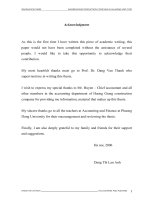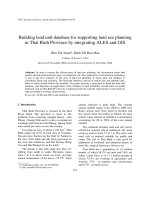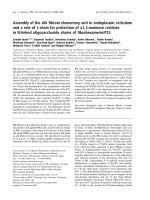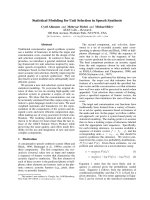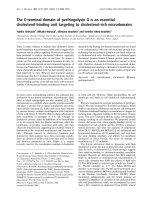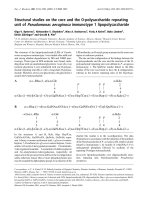unit 9
Bạn đang xem bản rút gọn của tài liệu. Xem và tải ngay bản đầy đủ của tài liệu tại đây (2.64 MB, 27 trang )
<span class='text_page_counter'>(1)</span>
<span class='text_page_counter'>(2)</span> Tsunami.
<span class='text_page_counter'>(3)</span> Snowstorm.
<span class='text_page_counter'>(4)</span> Earthquake.
<span class='text_page_counter'>(5)</span> Vocalno.
<span class='text_page_counter'>(6)</span> typhoon.
<span class='text_page_counter'>(7)</span> Wednesday, March 27th 2013. Period 57: Lesson 3:. Read.
<span class='text_page_counter'>(8)</span> VOCABULARY. - (to) strike - struck: va chạm - a tidal wave= a tsunami: sóng thần - a hurricane = a cyclone = a typhoon: bão lớn - a tornado: lốc xoáy - (to) suck up: hất lên, hút lên - funnel-shaped (a): dạng hình phễu - (to) erupt: phun - abrupt (a) = sudden (a): bất ngờ sự chuyển dịch - shift (n): phần lớn, đa số - majority (n): - Pacific Rim(n): Vùng lòng chảo Thái Bình Dương.
<span class='text_page_counter'>(9)</span> MATCHING 1. (to) strike - struck 2. a tidal wave = a tsunami 3. a hurricane = a cyclone = a typhoon 4. a tornado 5. (to) suck up 6. funnel-shaped (a) 7. (to) erupt 8. abrupt (a) = sudden (a) 9. shift (n) 10. majority (n) 11. Pacific Rim (n). a) dạng hình phễu b) hất lên, hút lên c) phần lớn, đa số d) Vùng lòng chảo Thái Bình Dương e) sóng thần f) bất ngờ g) bão lớn h) va chạm i) lốc xoáy j) phun k) sự chuyển dịch. Key: 1h – 2e – 3g – 4i – 5b – 6a – 7j – 8f – 9k – 10c – 11d.
<span class='text_page_counter'>(10)</span> Guess False 1. Most of the earthquakes in the world occur in the Ring of Fire.. T. 2. The earthquake in Kobe in 1995 caused severe damage.. T. 3. A huge tidal wave traveled from California Alaska toCalifornia Alaska and hit Anchorage in the 1960s.. F. 4. Typhoon, hurricane and tropical storm are different words for the same natural disaster.. T. 5 . The eruption of Mount Pinatubo is the world's largest ever volcanic eruption. eruption in more than 50 years. F. 6. A tornado looks like a funnel.. T.
<span class='text_page_counter'>(11)</span> Read the question.. passage. then. answer. the. Earthquakes: Ninety percent of earthquakes occur around the Pacific Rim, which is known as the “Ring of Fire”. In 1995, a huge earthquake struck the city of Kobe in Japan. A large number of people were killed when homes, office blocks and highways collapsed. What percentages of earthquakes occur around the Pacific Rim?.
<span class='text_page_counter'>(12)</span> Tidal waves: Tidal waves are the result of an abrupt shift in the underwater movement of the Earth. In the 1960s, a huge tidal wave traveled from Alaska to California! Where did the tidal wave travel from Alaska to in the 1960s?.
<span class='text_page_counter'>(13)</span> Typhoons: When a tropical storm reaches 120 kilometers per hour, it is called a hurricane in North and South America, a cyclone in Australia, and a typhoon in Asia. The word “typhoon” comes from Chinese: tai means “big” and feng means “wind”, so the word “typhoon” means “big”. Which words does the word “ typhoon” come from in Chinese?.
<span class='text_page_counter'>(14)</span> Volcanoes: We can usually predict when a volcano will erupt. Mount Pinatubo, which is a volcano in the Philippines, erupted in 1991. It was the world’s largest volcanic eruption in more than 50 years. Hundreds of people died, but thousands were saved because scientists had warned them about the eruption. Why were thousands of people saved when Mount Pinatubo in the Philippines erupted in 1991?.
<span class='text_page_counter'>(15)</span> Tornadoes: Tornadoes are funnel-shaped storms which pass overland below a thunderstorm. They can suck up anything that is in their path. In Italy in1981, a tornado lifted a baby, who was asleep in its baby carriage, into the air and put it down safely 100 meters away! How far could a tornado lift a baby into the air in Italy in 1981?.
<span class='text_page_counter'>(16)</span> occur around the Pacific Rim 1. The majority of earthquakes……………………………………… people were killed when 2.During the earthquake in Kobe, many………………………............ homes, office blocks and highways collapsed …………………………………….............................. there is an abrupt shift in 3. A tidal wave can only occur when……………………………………. the underwater movement of the Earth. ………………………………………………………. a cyclone. 4. In Australia, a tropical storm is known as …………….. the word " typhoon" 5. The Chinese language gave us ……………………………… passes overland below. 6. A tornado is a type of storm that …………………………..….. a thunderstorm and sucks up anything that is in its path. …………………………………………………………………………….
<span class='text_page_counter'>(17)</span> Model Sentences: Ex: 1/ Mount Pinatubo, which is a volcano in the Philippines, erupted in 1991. 2/ Nam, who lives on Le Loi street, likes playing the piano. 3/ Tet is a festival which occurs in late January or early February. 4/ I thanked the woman who helped me..
<span class='text_page_counter'>(18)</span> Defining Relative Clause. Relative clause NonDefining Relative Clause. Định nghĩa: là mệnh đề cần thiết, không thể bỏ đi. Giữa 2 mệnh đề không có dấu phẩy. Định nghĩa: là mệnh đề không cần thiết, có thể bỏ đi. Giữa 2 mệnh đề ngăn cách bằng dấu phẩy..
<span class='text_page_counter'>(19)</span> Cách dùng đại từ quan hệ: -WHO: làm chủ ngữ, thay thế cho từ chỉ người. -WHOM: làm túc từ, thay thế cho từ chỉ người. -WHICH: là chủ từ, túc từ, thay thế cho từ chỉ vật. -WHOSE: thay thế cho tính từ sở hữu. -THAT: dùng thay thế cho WHO,WHOM,WHICH..
<span class='text_page_counter'>(20)</span>
<span class='text_page_counter'>(21)</span>
<span class='text_page_counter'>(22)</span> visit Ha Long Bay. What should we do to reduce the natural disasters? 3/ She is going to stay for two weeks. 4/ She is going to visit the citadel..
<span class='text_page_counter'>(23)</span> Don’t cut down the trees..
<span class='text_page_counter'>(24)</span> Plant more green trees..
<span class='text_page_counter'>(25)</span> Save energy.
<span class='text_page_counter'>(26)</span> -Review the reading and the relative clauses. -Learn by heart the new words. -Prepare for the next lesson: Unit 14: Write..
<span class='text_page_counter'>(27)</span>
<span class='text_page_counter'>(28)</span>
